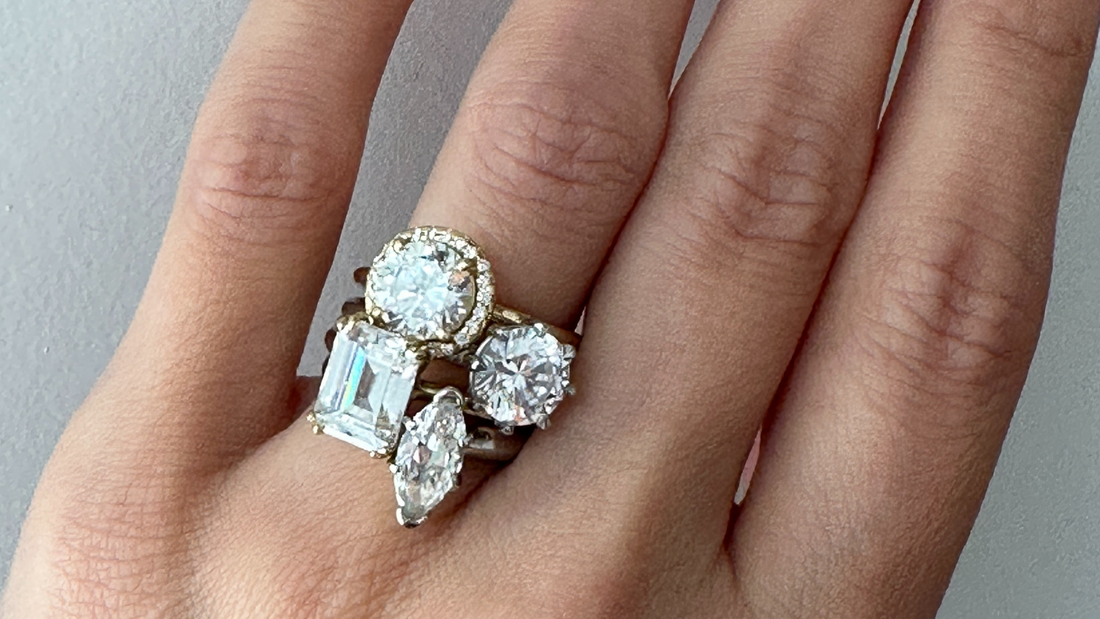I probably get asked about Lab Grown Diamonds (LGD) about once a week. Since I noticed this trend coming in my own inbox over the last few years, I started offering LGD as part of my Essential Diamonds collection.
My formal training in gemology, the study and grading of diamonds and colored gems was in 2005 at the Gemological Institute of America. At that time, we weren't really having a conversation about LGD. The technology was there, including lab grown for some colored stones, like rubies, sapphires and emeralds, but we were learning to detect synthetics -- meaning not really a a diamond or gem. Not at all the same chemical composition or light refraction in a synthetic. In LGD, however, the chemical nature is exactly the same as a natural diamonds. The difference is in the shape of the crystal growth.
 Lab grown diamond rough on the left, naturally extracted diamond crystal on the right
Lab grown diamond rough on the left, naturally extracted diamond crystal on the right
There are for now, also two different methods for lab producing diamonds: High pressure, high temperature (HPHT) method and the chemical vapor deposition (CVD) method. I'll go more into the methodology and the environmental impact on manufacturing LBG vs Natural Diamonds in another journal entry (there is a lot and sustainability is high on the priority list of areas to study and practice), but for now, I want to focus on purchasing diamonds as an investment in your collection.
My personal take is that since a LGD is nearly undetectable to a natural diamond, unless through a laboratory analysis, LGD are a great choice for ring set with prongs to have as a "starter". The stone can easily be swapped out later for a natural diamond without much damage to the ring (so long as the natural diamond has the same dimensions as the LGD).

LGD are also a great choice if you want the look of large diamond studs, but don't want to break the bank.

I wouldn't choose LGD for a tennis bracelet or a design that has a lot of pave diamonds. The labor in these pieces can sometimes be much more than the value of the stones.
LGD are also great for a more fashionable and trendy piece that you want to wear for just now and can't wait :)
More to come on this topic!

